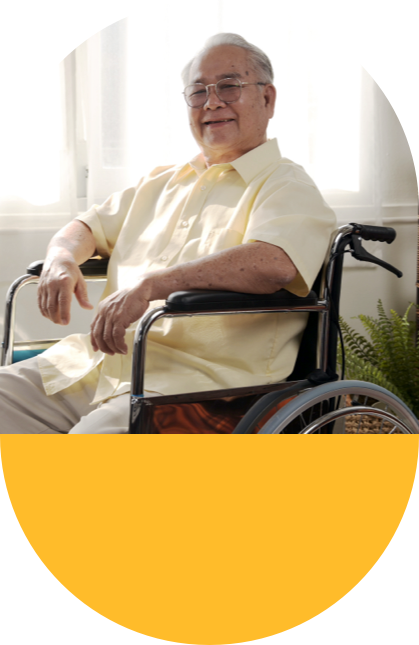Parkinson’s disease is not just a condition, it’s a progressive journey that affects every aspect of life for those diagnosed and their loved ones. This neurological disorder gradually impairs movement, leading to symptoms that evolve and intensify over time.
The progression of Parkinson’s is commonly categorized into five distinct stages, including mild, moderate, mid-stage, advanced, and late-stage. From the initial signs that often go unnoticed to more severe and life-altering symptoms, each stage brings new challenges and adjustments.
Stage 1: Mild Parkinson’s
The initial stage of Parkinson’s is characterized by mild symptoms that generally don’t interfere with daily activities. Symptoms are typically limited to one side of the body (unilateral involvement) and may include slight tremors and changes in posture, walking, and facial expressions.
Many people at this stage may not even realize they have Parkinson’s, attributing their symptoms to normal aging or other causes.
Stage 2: Moderate Parkinson’s
During the second stage of Parkinson’s, symptoms become more noticeable and start affecting both sides of the body (bilateral involvement), although one side may be more affected than the other.
Tremors, rigidity, and other movement difficulties become more evident. Patients might experience problems with posture and walking, and everyday tasks may become more challenging. Despite these difficulties, individuals can usually still live independently.

Stage 3: Mid-Stage Parkinson’s
Stage 3 is considered the middle stage of Parkinson’s disease. Balance issues become more prominent, and falls are more common. While patients are still independent, activities such as dressing and eating may become increasingly difficult and time-consuming.
Symptoms significantly impair speed and quality of movements, but it’s usually possible to maintain some degree of independence with modifications and assistance.
Stage 4: Advanced Parkinson’s
By the fourth stage, Parkinson’s has progressed to a severe level. Individuals may no longer be able to live alone safely due to significant movement and balance problems.
Walking may require a walker or assistance, and tremors and rigidity can significantly interfere with daily activities. Assistance is typically needed for personal care, although the individual can usually still stand and move without help.
Stage 5: Late-Stage Parkinson’s
The final stage of Parkinson’s disease is the most debilitating. Individuals may be unable to walk or stand and might require a wheelchair for mobility.
Due to significant motor and non-motor symptoms, full assistance is required for all daily activities. In addition to physical challenges, cognitive issues such as dementia may become more pronounced in this stage, further complicating care.
Managing Parkinson’s Disease
Parkinson’s disease, while incurable, can be managed through a combination of treatments to ease symptoms and enhance daily life significantly.
Medications & Physical Therapy
Medications adjust dopamine levels to improve movement and reduce tremors, while physical therapy focuses on improving balance, strength, and mobility. These treatments can help individuals stay mobile and autonomous for longer.
Lifestyle Modifications
Lifestyle modifications, including diet and exercise changes, alongside options like Deep Brain Stimulation (DBS) for advanced cases, also play a crucial role in symptom management. Consult your doctor to learn more about advanced treatments.
Early Detection & Intervention
Early detection and intervention, along with the adaptation of treatment plans as the disease progresses, are essential for effective management. Continuous collaboration between patients, their families, and healthcare teams ensures that care remains responsive to the evolving needs of the individual.
Support Groups & Counseling
Dementia can be incredibly isolating, which means staying connected is critical. Support groups and counseling can provide vital emotional backing, helping to combat the isolation and anxiety that often accompany Parkinson’s.
Adopting a holistic care approach that encompasses medical, physical, and emotional support not only alleviates physical symptoms but also boosts morale. This can foster active participation in care and lead to improved outcomes and quality of life for those living with Parkinson’s.
Navigating Parkinson’s Together: Your Path Forward
Understanding the five stages of Parkinson’s disease equips individuals and their families with the knowledge needed to face the challenges ahead. Each stage presents its own set of obstacles, but with the right support and care, those living with Parkinson’s can continue to lead fulfilling lives.
At Juniper Village at Mount Joy, we are committed to providing that support. Our approach is not just about managing symptoms but enhancing quality of life through personalized care, engaging activities, and a strong community spirit. We believe in the power of connection, the importance of dignity, and the value of every day.
If you or your loved one is navigating the journey of Parkinson’s disease, we invite you to explore what Juniper Village at Mount Joy has to offer. Book a tour of our community today to see firsthand how we can make a difference in your life or the life of someone you love.
Discover a place where every individual is respected, every need is addressed, and every moment is cherished.







